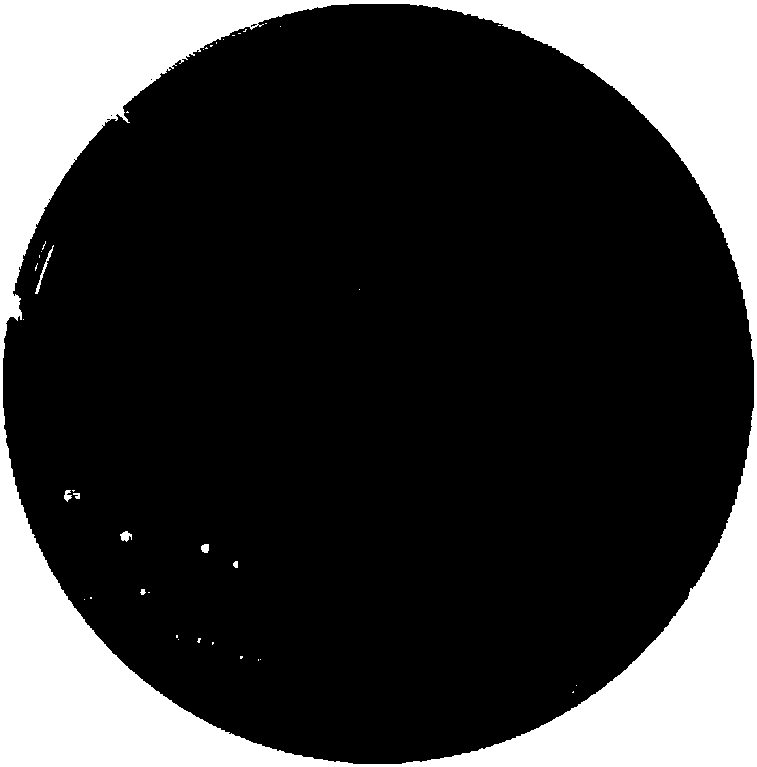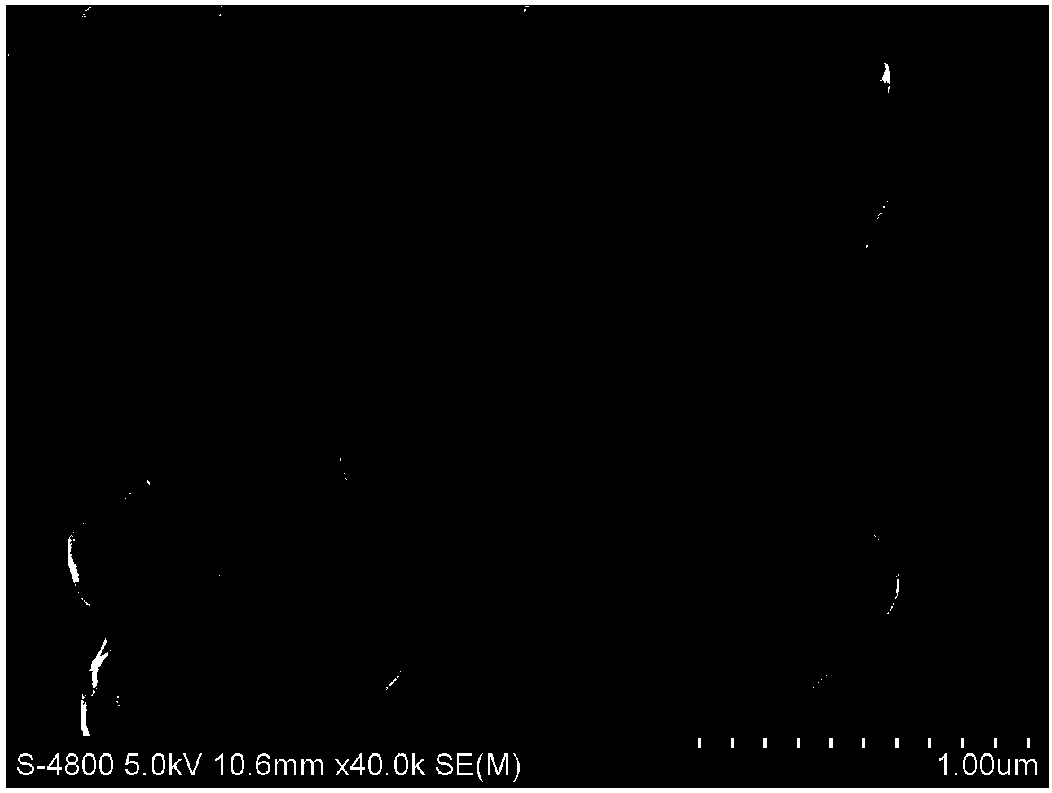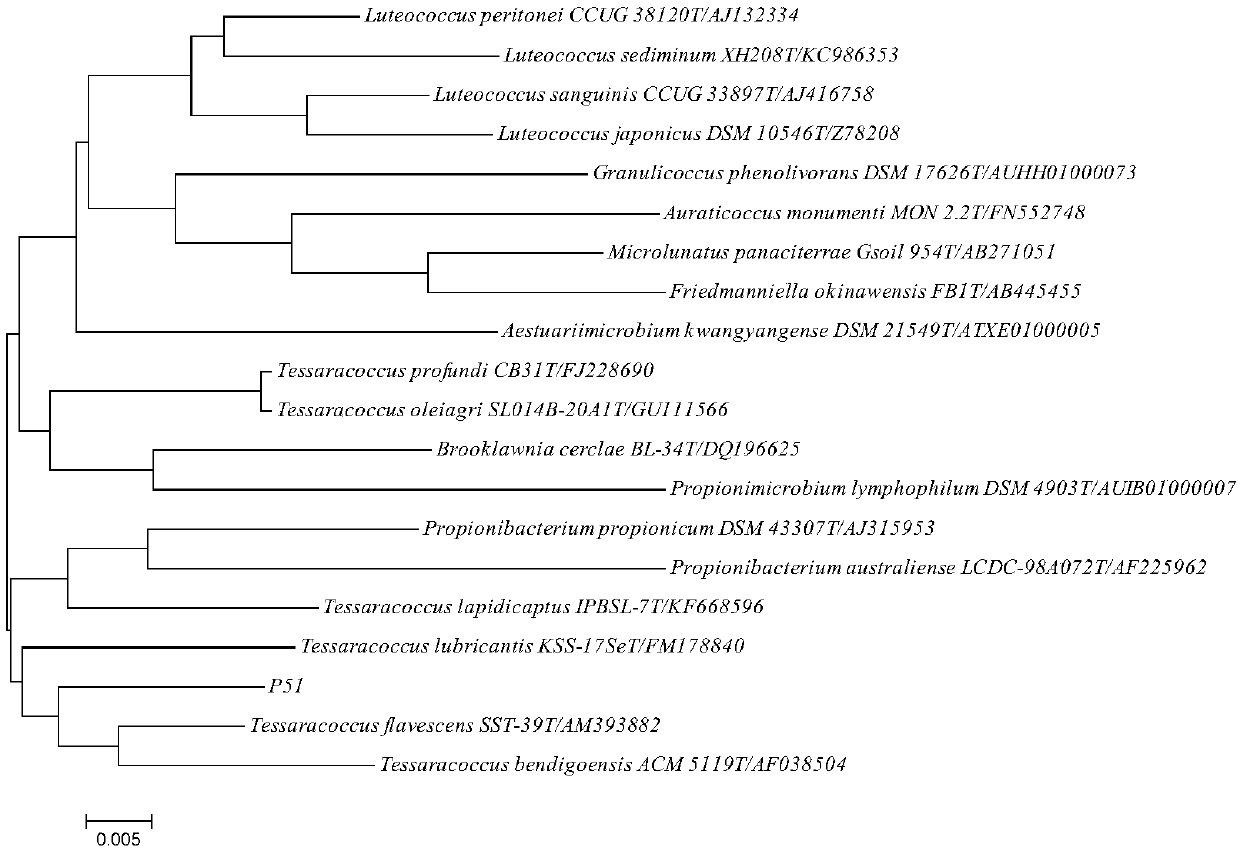Method for degrading oil and phenanthrene through bacterial strain P51
A strain and petroleum technology, applied in the field of microorganisms, to achieve the effect of complete restoration of the marine environment and high degradability
- Summary
- Abstract
- Description
- Claims
- Application Information
AI Technical Summary
Problems solved by technology
Method used
Image
Examples
Embodiment 1
[0033] Collection and isolation of strain P51
[0034] The samples were collected from the seabed sediments in the oil-polluted sea area of Xingang, Dalian. After collection, they were stored in ice boxes and quickly transported back to the laboratory for the enrichment and separation of oil-degrading microorganisms.
[0035] About 10 g of freshly collected sediment samples were weighed and added to a 250 mL Erlenmeyer flask containing 100 mL of enrichment medium, enriched at 15°C for 7 days, and then isolated by gradient dilution separation to obtain oil-degrading strains.
[0036] The culture medium consists of:
[0037] Inorganic salt medium: MgSO 4 ·7H 2 O 0.7g, NH 4 NO 3 1g, KCl 0.7g, KH 2 PO 4 2g, Na 2 HPO 4 3g, 1000mL of natural seawater, pH 7.5, add 10mL of trace element mixture after sterilization.
[0038] Trace element mixture: CaCl 2 2mg, FeCl 3 ·6H 2 O 50mg, CuSO 4 0.5mg, MnCl 2 4H 2 O0.5mg, ZnSO 4 ·7H 2 O 10mg, distilled water 1000mL.
[00...
Embodiment 2
[0042] Morphological observation and identification of strains:
[0043] Streak culture of strain P51 on enriched medium with petroleum as the only carbon source and LB medium at 15°C to single colony, and observe the colony morphology of strain P51. At the same time, the bacterial colonies were picked and fixed with 2.5% glutaraldehyde solution for 1-2 hours, and then the bacterial suspension was dropped on the silicon chip, and naturally aired to a slightly wet and semi-dry state, and then the silicon chip was rinsed with a phosphate buffer solution with a pH of 7.2 for 10 minutes. After rinsing three times, they were dehydrated with 30%, 50%, 70%, 85%, 95%, and 100% ethanol gradients respectively, and then fixed by dropping isoamyl acetate to the silicon wafer, and left overnight. On the second day, the prepared samples were coated with a film and then observed with a scanning electron microscope. like figure 1 As shown, the bacterial strain P51 is on the solid LB medium,...
Embodiment 3
[0046] Determination of Petroleum Degradation Performance of Strain P51
[0047] Evaluation of oil degradation performance of strain P51 The oil degradation rate of strain P51 was determined by ultraviolet spectrophotometry. Using the extracted petroleum ether mixture as a sample, the U-5100 ultraviolet spectrometer was used to analyze the change of petroleum content before and after strain degradation. The calculation formula of bacterial strain to the degradation rate of oil is: η=(n 0 -n 1 ) / n 0 ×100%, where η is the oil degradation rate, n 0 is the blank control, n 1 is the residual petroleum content in the extract of the culture medium inoculated with the strain.
[0048] Add 150 μL of petroleum to the enrichment medium as the only carbon source to analyze the petroleum degradation performance of the strain. The bacterial strain (bacterial suspension concentration is 10 8 cfu / ml) was inoculated into 100ml enriched medium according to the inoculation amount of 1%. A...
PUM
 Login to View More
Login to View More Abstract
Description
Claims
Application Information
 Login to View More
Login to View More - R&D
- Intellectual Property
- Life Sciences
- Materials
- Tech Scout
- Unparalleled Data Quality
- Higher Quality Content
- 60% Fewer Hallucinations
Browse by: Latest US Patents, China's latest patents, Technical Efficacy Thesaurus, Application Domain, Technology Topic, Popular Technical Reports.
© 2025 PatSnap. All rights reserved.Legal|Privacy policy|Modern Slavery Act Transparency Statement|Sitemap|About US| Contact US: help@patsnap.com



